Blog
The Capital City Comfort Blog
- Same-Day Services
- Free Estimates
- All Makes and Models

By 7001715912
•
January 26, 2025
How Private Equity Is Killing Our Industry In recent years, private equity firms have entered the HVAC industry with the promise of innovation, growth, and profitability. On the surface, this sounds like a win for everyone: companies grow, customers get better service, and the industry becomes more competitive. However, the reality is far less optimistic. Behind the scenes, private equity's involvement has fundamentally changed the way HVAC businesses operate—and not always for the better. Here’s a closer look at how private equity is impacting our industry and why it might not be the golden ticket it’s often portrayed to be. 1. Profit Over People Private equity firms operate with one goal in mind: maximizing profits. While there’s nothing wrong with making money, this often comes at the expense of employees, customers, and long-term business health. Here’s how it plays out: Cost-Cutting Measures: To boost short-term profitability, many private equity-owned HVAC companies slash budgets for training, quality tools, and even wages. Pressure on Technicians: Employees are often pushed to upsell services and products aggressively, even when they may not be in the customer’s best interest. Reduced Customer Focus: Companies focus more on hitting quarterly financial targets than providing exceptional customer service. 2. The Rise of Monopolies Private equity firms often buy multiple smaller HVAC businesses within a region, consolidating them under one brand. While this can create economies of scale, it also reduces competition and limits customer choice. Higher Prices: With fewer competitors in the market, private equity-backed companies can increase service prices without fear of losing customers. Homogenized Service: Instead of tailoring services to local needs, these larger companies often implement one-size-fits-all solutions that lack the personal touch smaller businesses offer. 3. Erosion of Small Businesses Private equity’s aggressive acquisition strategy has led to the decline of locally-owned HVAC businesses, which have long been the backbone of the industry. Here’s why this matters: Community Connection: Small, family-owned businesses are often deeply rooted in their communities, offering personalized service and genuine care. Fair Competition: Private equity-backed firms have more resources to outspend small businesses on advertising, making it harder for independents to compete. Loss of Identity: As local businesses are absorbed into larger conglomerates, the industry loses its diversity and charm. 4. Short-Term Thinking Private equity investments are typically designed to generate significant returns within 5-7 years. This focus on short-term profits can be detrimental to the long-term health of HVAC companies. Deferred Maintenance: Critical investments in technology, employee development, and infrastructure are often delayed to save costs. Overworked Employees: To meet aggressive financial targets, technicians and staff are often overburdened, leading to burnout and high turnover rates. Damaged Reputations: Customers notice when service quality declines, which can tarnish a company’s reputation even after private equity exits. 5. What This Means for Customers Private equity’s involvement doesn’t just affect companies; it has a direct impact on customers as well: Decreased Trust: Customers may feel pressured by aggressive upselling tactics, leading to a breakdown in trust. Inconsistent Service Quality: As companies prioritize profits, the quality of installations and repairs can suffer. Higher Costs: Consolidation and reduced competition often mean customers pay more for services without seeing an improvement in quality. 6. What Can Be Done? While the influence of private equity in HVAC isn’t going away anytime soon, there are ways to mitigate its impact: Support Local Businesses: Choose locally-owned HVAC companies that prioritize customer satisfaction and community engagement. Do Your Research: Before hiring an HVAC company, look into their ownership and reputation. Online reviews and word-of-mouth recommendations can help you find businesses that align with your values. Demand Transparency: Ask questions about pricing, services, and warranties to ensure you’re getting a fair deal. Conclusion Whenever you need service to your heating and air system, Do your research. Find a locally owned company. Call us at Capital City Comfort. We promise to never sell you something you don't need, and we don't pay our technicians based on sales!
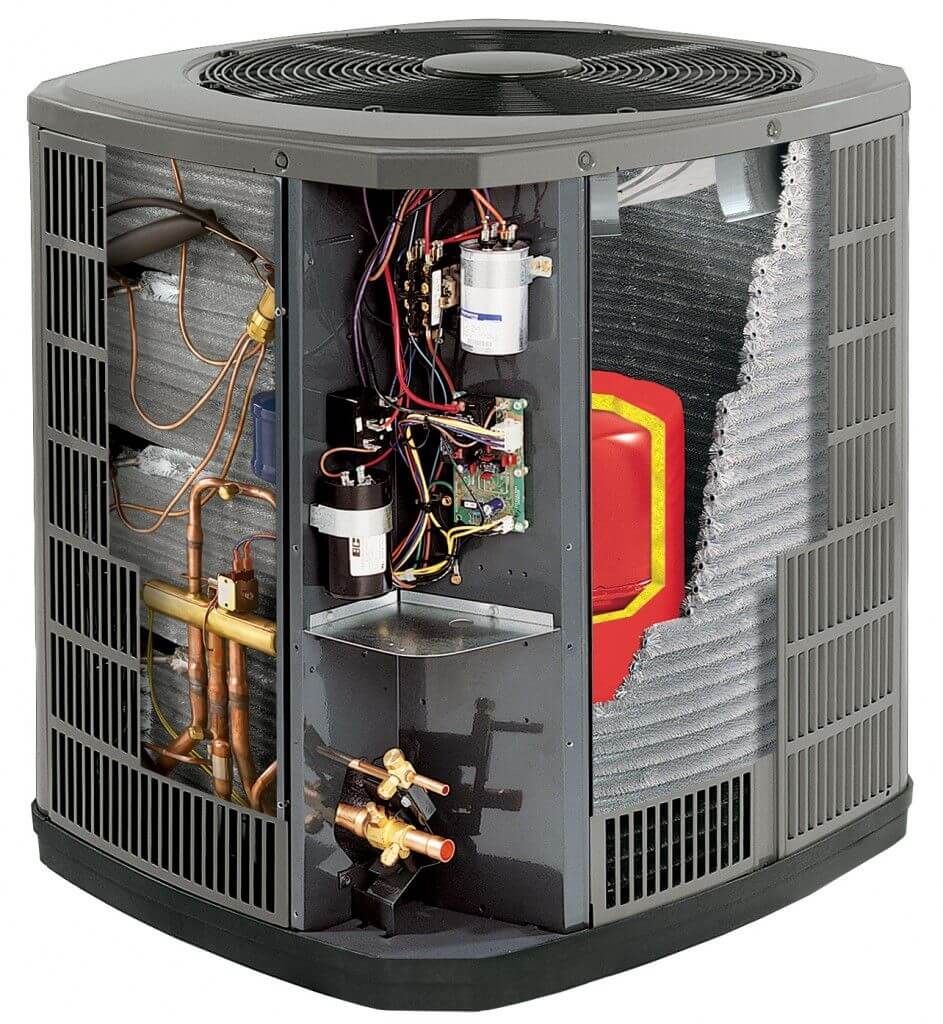
By 7001715912
•
January 21, 2025
What is a Heat Pump and How Does It Work? As homeowners increasingly seek energy-efficient and environmentally friendly heating and cooling solutions, heat pumps have emerged as a popular option. But what exactly is a heat pump, and how does it work? Let’s dive into the details to help you understand this innovative technology. What is a Heat Pump? A heat pump is a versatile home heating and cooling system that transfers heat from one place to another, rather than generating heat directly. It can be used to heat your home in the winter and cool it in the summer, offering a two-in-one solution for year-round comfort. How Does a Heat Pump Work? At its core, a heat pump operates based on the principles of heat transfer. Here’s a breakdown of how it functions in both heating and cooling modes: Heating Mode: Heat Absorption: The heat pump extracts heat from the outdoor air, ground, or water (depending on the type of heat pump) even in cold temperatures. Compression: The absorbed heat is then compressed, increasing its temperature. Heat Distribution: The heated air is distributed throughout your home via ductwork or through a ductless system. Cooling Mode: Heat Extraction: In cooling mode, the heat pump works in reverse. It absorbs heat from inside your home. Heat Release: The absorbed heat is released outdoors, cooling the air inside your home. Air Circulation: Cool air is then circulated through the home, reducing indoor temperatures. Types of Heat Pumps Air-Source Heat Pumps: These are the most common and extract heat from the air outside your home. Ground-Source (Geothermal) Heat Pumps: These use the stable temperature of the ground to provide heating and cooling. Water-Source Heat Pumps: These draw heat from a water source, such as a pond or a well. Benefits of a Heat Pump Energy Efficiency: Heat pumps are highly efficient because they move heat rather than generate it, reducing energy consumption. Lower Operating Costs: Due to their efficiency, heat pumps can lower your utility bills compared to traditional heating and cooling systems. Environmentally Friendly: By using renewable heat sources and reducing reliance on fossil fuels, heat pumps contribute to a lower carbon footprint. Versatility: With the ability to both heat and cool your home, heat pumps offer a comprehensive solution for your climate control needs. Considerations Before Installing a Heat Pump Climate Suitability: Heat pumps are most efficient in moderate climates. In extremely cold regions, their performance may decrease, though advancements in technology are improving cold-weather efficiency. Initial Cost: While heat pumps can offer long-term savings, the initial installation cost can be higher than traditional systems. However, incentives and rebates may be available to offset the cost. Maintenance: Regular maintenance is essential to ensure optimal performance and longevity. Conclusion Heat pumps offer a smart and sustainable way to manage your home’s heating and cooling needs. By understanding how they work and the benefits they provide, you can make an informed decision about whether a heat pump is the right choice for your home. With proper installation and maintenance, a heat pump can provide comfort, efficiency, and savings for years to come.
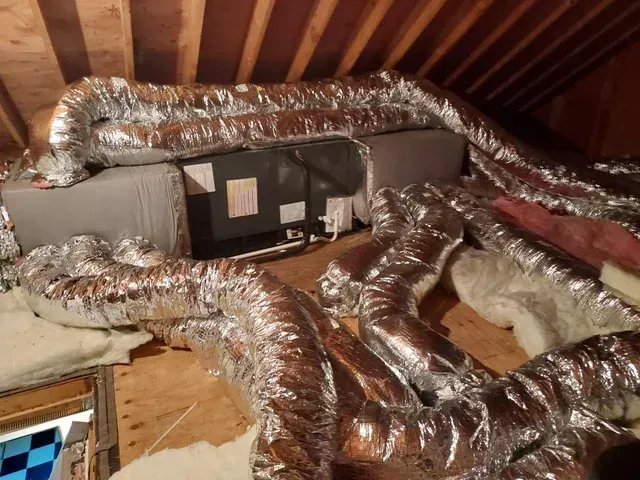
By 7001715912
•
January 15, 2025
Most Common Problems with a Bad HVAC Installation When it comes to HVAC systems, proper installation is crucial for ensuring optimal performance, efficiency, and longevity. A poorly installed HVAC system can lead to numerous issues that affect not only the system's functionality but also your comfort and energy bills. In this blog post, we'll explore some of the most common problems associated with bad HVAC installations and how they can be avoided. 1. Incorrect Sizing One of the most frequent mistakes in HVAC installation is incorrect sizing of the system. An HVAC unit that is too large or too small for your space can lead to a host of issues: Oversized Systems: These can cycle on and off frequently, leading to inconsistent temperatures, increased wear and tear, higher energy bills, and humidity issues due to inadequate dehumidification during short cycles. Undersized Systems: These may struggle to maintain the desired temperature, resulting in constant running, inadequate cooling or heating, and increased energy consumption. Proper load calculations should be performed by a qualified HVAC professional to ensure the system is appropriately sized for your home. 2. Poor Ductwork Installation Faulty ductwork can severely impact the efficiency and performance of your HVAC system. Common ductwork issues include: Leaks and Gaps: Poorly sealed ducts can leak air, reducing system efficiency and increasing energy costs. Improper Design: Ducts that are too long, have too many bends, or are improperly sized can restrict airflow, leading to uneven heating or cooling. 3. Improper Refrigerant Charge A correct refrigerant charge is essential for the efficient operation of an HVAC system. Too much or too little refrigerant can cause: Reduced Efficiency: Incorrect refrigerant levels can make the system work harder, increasing energy consumption. System Damage: Overcharging or undercharging can cause components to wear out prematurely or lead to system failure. 4. Inadequate Airflow Poor airflow can result from several factors, including improperly sized ductwork, blocked vents, or a poorly located air handler. This can cause: Uneven Temperatures: Some rooms may be too hot or too cold. Increased Wear and Tear: The system may have to work harder to compensate for the poor airflow, leading to premature breakdowns. 5. Electrical Issues Electrical problems in an HVAC system can stem from improper wiring or connections during installation. These issues can lead to: Frequent Breakdowns: Loose or incorrect wiring can cause intermittent system failures. Safety Hazards: Faulty wiring can pose a fire risk or cause electric shocks. 6. Lack of Proper Drainage An HVAC system needs a properly installed drainage system to handle the condensation produced during operation. Poor drainage can result in: Water Damage: Leaks can cause damage to ceilings, walls, and floors. Mold Growth: Standing water can lead to mold and mildew, which can affect indoor air quality and health. 7. Not Brazing with Nitrogen Brazing without nitrogen can introduce oxygen into the system, leading to oxidation inside the copper tubing. This oxidation can cause: TXV Failures: Oxidation can clog the thermostatic expansion valve (TXV), leading to system inefficiency or failure. Reduced System Longevity: The presence of oxidation and contaminants can shorten the lifespan of the HVAC system. Always use nitrogen during the brazing process to purge oxygen and prevent oxidation inside the system. 8. Improper Airflow Adjustment for Static Pressure Incorrectly adjusted airflow can result in high static pressure, which can strain the system and reduce efficiency. This can cause: Reduced Efficiency: High static pressure forces the system to work harder, increasing energy consumption. System Damage: Prolonged operation under high static pressure can lead to premature wear and tear on system components. A thorough system check is essential after installation to ensure everything is functioning correctly. Skipping this step can result in: Undetected Issues: Small problems can go unnoticed, leading to bigger issues over time. Reduced Efficiency: The system may not operate at peak efficiency, increasing energy costs and reducing comfort. Final Thoughts A bad HVAC installation can lead to a range of problems that compromise the system's performance, efficiency, and lifespan. By ensuring that your HVAC system is installed by a qualified professional who follows industry best practices, you can avoid these common issues and enjoy reliable, efficient comfort in your home. Regular maintenance and inspections can further help in identifying and addressing any potential problems early on, ensuring your system continues to operate smoothly for years to come.
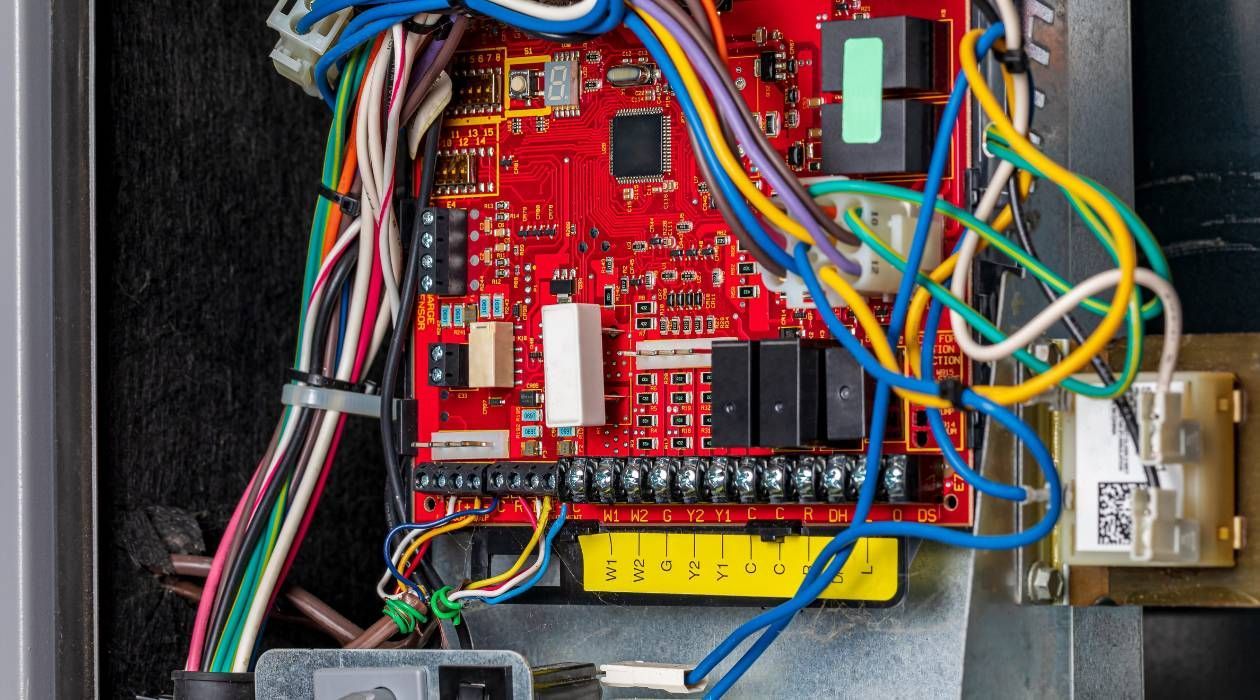
By 7001715912
•
January 13, 2025
The Need for Surge Protectors for HVAC Systems with Control Boards In today's technologically advanced world, HVAC systems are more sophisticated than ever, featuring intricate control boards that manage various functions for optimal performance. However, with increased complexity comes a heightened vulnerability to electrical surges. Protecting these critical components is essential for the longevity and reliability of your HVAC system. One of the most effective ways to safeguard your investment is by installing surge protectors specifically designed for HVAC systems with control boards. Here's why surge protection is essential and how it can benefit your HVAC system. Understanding Electrical Surges An electrical surge, or transient voltage, is a sudden and brief spike in electrical power. These surges can occur due to several reasons, including: Lightning Strikes: Even distant lightning strikes can cause power surges that travel through electrical lines and damage appliances. Power Outages: When power is restored after an outage, the sudden influx of electricity can create a surge. Electrical Grid Switching: Changes in the electrical grid or switching between power sources can result in voltage spikes. Internal Surges: Everyday activities, such as turning on high-powered appliances, can cause minor surges within a home's electrical system. Why HVAC Systems Are Vulnerable Modern HVAC systems rely heavily on control boards to regulate operations such as temperature control, fan speed, and compressor function. These boards are sensitive to voltage fluctuations, making them susceptible to damage from power surges. When a surge occurs, it can: Damage Control Boards: The intricate circuitry in control boards can be easily fried by high voltage, leading to costly repairs or replacements. Disrupt System Operation: A damaged control board can cause the HVAC system to malfunction or stop working entirely. Reduce System Lifespan: Repeated exposure to surges can degrade components over time, shortening the overall lifespan of the HVAC system. Benefits of Surge Protectors for HVAC Systems Installing a surge protector for your HVAC system offers several key benefits: 1. Protection of Critical Components Surge protectors shield the control board and other sensitive components from voltage spikes, preventing damage and ensuring consistent operation. 2. Cost Savings Preventing damage to the control board and other parts can save you from expensive repairs and replacements, as well as potential downtime. 3. Increased System Longevity By protecting your HVAC system from electrical surges, you can extend its lifespan and get more value from your investment. 4. Peace of Mind Knowing that your HVAC system is protected against unpredictable power surges provides peace of mind, especially during stormy seasons. Choosing the Right Surge Protector When selecting a surge protector for your HVAC system, consider the following factors: Compatibility: Ensure the surge protector is compatible with your HVAC system's voltage and specifications. Response Time: Look for a surge protector with a fast response time to quickly react to voltage spikes. Energy Rating: Choose a surge protector with an adequate energy rating to handle the potential surge levels in your area. Professional Installation: Have a qualified HVAC technician install the surge protector to ensure proper setup and functionality. Final Thoughts Surge protectors are a crucial investment for protecting HVAC systems with control boards from the damaging effects of electrical surges. By installing a surge protector, you can safeguard your system's vital components, reduce repair costs, and extend the life of your HVAC system. Consult with an HVAC professional to select and install the right surge protection solution for your system, ensuring reliable performance and peace of mind.
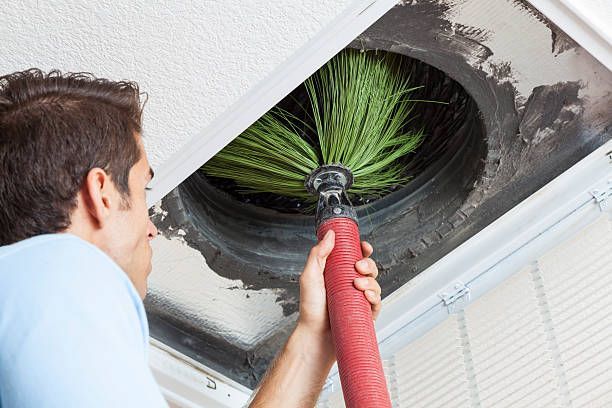
By 7001715912
•
January 10, 2025
If you’ve ever encountered a musty or unpleasant odor coming from your HVAC system, you might have experienced what’s known as Dirty Sock Syndrome. While the name might sound quirky, this issue is more than just a minor inconvenience—it can significantly affect the air quality in your home or business. Understanding the causes, symptoms, and solutions to Dirty Sock Syndrome is key to maintaining a healthy and efficient HVAC system. What is Dirty Sock Syndrome? Dirty Sock Syndrome (DSS) refers to a foul, often sweaty, odor that emanates from HVAC systems, typically when the air conditioning or cooling system is in operation. The smell is often likened to dirty gym socks, hence the name. It typically occurs when the cooling coils in your HVAC system become contaminated with bacteria, mold, or mildew, which thrive in the moist, warm environments of air handlers, coils, and ducts. How Does Dirty Sock Syndrome Develop? When your HVAC system runs in cooling mode, moisture from the air condenses on the evaporator coils. This moisture, combined with dust, dirt, and organic matter, can create an ideal breeding ground for bacteria and mold. Over time, these microorganisms build up, and the resultant smell gets circulated throughout your home when the system is turned on. The odor tends to become more noticeable after the HVAC has been turned off for a period (for example, when the system is not in use during cooler months) and is then switched back on as the weather warms up. Symptoms of Dirty Sock Syndrome The primary symptom of Dirty Sock Syndrome is the presence of an unpleasant odor coming from your HVAC system. The smell may be persistent or only noticeable when the system kicks on after a long period of being off. Other potential symptoms might include: Musty or damp smells when the air conditioner is running. Allergic reactions, such as sneezing, coughing, or eye irritation. Increased respiratory issues due to mold or bacteria in the system. Reduced air quality in your home or business. Causes of Dirty Sock Syndrome There are several factors that contribute to the development of Dirty Sock Syndrome: 1. Excess Moisture Air conditioning systems cool the air by removing moisture, which collects on the evaporator coils. If the coils are not properly maintained, they can accumulate a layer of moisture combined with dust and dirt. 2. Poor Maintenance Over time, dust, debris, and contaminants can build up on various components of the HVAC system. If the system isn’t regularly cleaned and serviced, it provides a fertile environment for bacteria, mold, and mildew to grow. 3. High Humidity Living in an area with high humidity can exacerbate the problem. The increased moisture in the air can result in more condensation on your cooling coils, leading to the growth of mold and bacteria. 4. Dirty Air Filters Clogged or dirty air filters can trap dirt and debris, limiting airflow and causing an accumulation of dust on the coils. This can promote the growth of mold and mildew, contributing to Dirty Sock Syndrome. 5. Inadequate Ventilation Poor ventilation within your HVAC system can cause stale, moist air to stagnate in the ducts, promoting the growth of bacteria and mold, which in turn leads to unpleasant odors. How to Prevent and Resolve Dirty Sock Syndrome The good news is that Dirty Sock Syndrome is preventable and treatable with proper HVAC maintenance and care. Here are some tips to help you keep your HVAC system smelling fresh: 1. Regular HVAC Maintenance Schedule regular HVAC maintenance with a professional technician to inspect and clean the system. Cleaning the evaporator coils and ensuring proper drainage of moisture is critical in preventing mold and bacteria growth. 2. Change Air Filters Regularly Air filters should be changed regularly, at least every 1-3 months, depending on the type of filter and the level of dust and debris in your environment. Clean filters help maintain proper airflow and reduce dust buildup. 3. Install a UV Light System UV light systems can be installed inside your HVAC system to kill bacteria, mold, and other pathogens that contribute to Dirty Sock Syndrome. These systems use ultraviolet light to disinfect the air and the surfaces of the cooling coils, preventing microbial growth. 4. Improve Ventilation Ensure that your HVAC system is providing adequate ventilation and that air is able to circulate freely. This helps prevent the buildup of moisture in stagnant areas of the system. 5. Use a Dehumidifier In areas with high humidity, a dehumidifier can be a helpful addition to your HVAC system. By controlling the humidity levels in your home or office, you can reduce the amount of moisture that the system collects, thereby minimizing the risk of mold and bacteria growth. 6. Clean the Ductwork Over time, dust and debris can accumulate in the ducts, providing a perfect environment for mold and mildew to thrive. Have your ducts professionally cleaned to eliminate this problem. When to Call a Professional If you’ve tried DIY cleaning and the odor persists, or if you notice symptoms of mold or mildew growth in your HVAC system, it’s important to call a professional HVAC technician. A professional will have the expertise and equipment necessary to thoroughly clean the system, replace any damaged components, and restore proper air quality to your home or business. Conclusion Dirty Sock Syndrome is a common yet preventable issue that can affect the performance and air quality of your HVAC system. By understanding the causes and symptoms of DSS, you can take steps to prevent it from affecting your home or business. Regular maintenance, proper ventilation, and good hygiene practices for your HVAC system are essential in keeping your air fresh and your system running smoothly. If the problem persists, don't hesitate to reach out to an HVAC professional for assistance.
By 7001715912
•
January 8, 2025
Non-Invasive Testing for Refrigerant Charge: A Game Changer in HVAC Maintenance Maintaining the correct refrigerant charge in an HVAC system is crucial for its efficiency and longevity. Traditionally, checking the refrigerant charge involves invasive methods that require accessing the system, which can lead to potential refrigerant leaks or system contamination. However, non-invasive testing methods are revolutionizing HVAC maintenance by offering accurate diagnostics without the risks associated with traditional techniques. Let's explore how non-invasive testing works and its benefits. What Is Non-Invasive Testing for Refrigerant Charge? Non-invasive testing methods allow technicians to assess the refrigerant charge in an HVAC system without opening the system or connecting gauges that might disturb the sealed environment. These techniques rely on external measurements and sophisticated diagnostic tools to determine whether the refrigerant level is within the optimal range. Common Non-Invasive Methods: Temperature Measurements: Bluetooth Hygrometers: Technicians use Bluetooth-enabled hygrometers to measure humidity and temperature at various points on the HVAC system's components. These devices provide accurate readings wirelessly, enhancing the efficiency and safety of the diagnostic process. Delta T Calculations: The temperature difference (ΔT) between the return and supply air is analyzed to infer the system's cooling performance and refrigerant charge status. System Performance Metrics: Power Consumption Analysis: By monitoring the electrical consumption of the system, technicians can determine if the system is operating efficiently or if a refrigerant charge issue might be affecting performance. Airflow Measurement: Ensuring proper airflow across the coils can also indicate whether the system is under or overcharged. Condensing Temperature Over Ambient (CTOA): CTOA Measurement: This method involves calculating the difference between the condensing temperature and the ambient temperature. A correct CTOA value indicates proper refrigerant charge and system performance. Non-invasive CTOA assessments use external temperature sensors to gather the necessary data without accessing the refrigerant directly. Benefits of Non-Invasive Testing 1. Enhanced Safety and Environmental Protection: Reduced Risk of Leaks: Since the system remains sealed, there is no risk of accidentally releasing refrigerant into the atmosphere, which is crucial for both safety and environmental protection. Less System Contamination: Non-invasive methods prevent contaminants from entering the system, which can occur when gauges or hoses are connected. 2. Time Efficiency: Faster Diagnostics: Non-invasive techniques can quickly provide insights into the system's performance, saving time during routine maintenance or troubleshooting. 3. Improved Customer Satisfaction: Transparent Reporting: Technicians can show real-time data and explain findings to customers without invasive procedures, building trust and satisfaction. When to Use Non-Invasive Testing Non-invasive testing is ideal for routine maintenance, initial diagnostics, and when quick checks are needed to confirm system performance. However, if non-invasive methods indicate a potential issue, further invasive testing might be necessary to confirm the diagnosis and perform repairs. Final Thoughts Non-invasive testing for refrigerant charge is transforming HVAC maintenance by offering a safer, faster, and more cost-effective way to ensure systems operate efficiently. By embracing these advanced diagnostic methods, HVAC professionals can enhance service quality while protecting both the environment and the integrity of the systems they maintain. Next time you see us at your home performing maintenance, notice all of the cool gadgets we are using to make sure your equipment is performing properly!
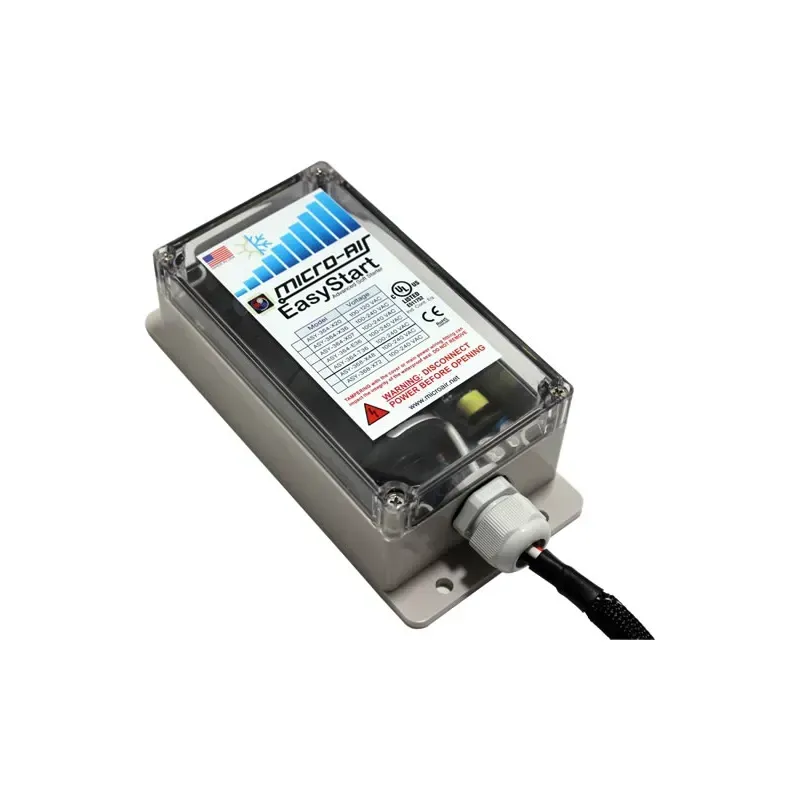
By 7001715912
•
January 6, 2025
What Is a Soft Start Kit, and Do I Need One? If you’ve ever noticed your air conditioning system or other large appliances making a loud jolt when they start up, you’ve witnessed the strain these systems experience during startup. This is where a soft start kit comes in. But what exactly is a soft start kit, and is it something you should consider for your equipment? Let’s break it down. What Is a Soft Start Kit? A soft start kit is a device that reduces the inrush of electrical current that occurs when a motor starts. Motors, such as those in HVAC systems, typically require a large amount of energy to get going. This sudden surge of power can: Create a loud, jarring noise Cause wear and tear on the motor and other components Trigger electrical issues, such as tripped breakers or power fluctuations A soft start kit smooths out the startup process by gradually increasing the power to the motor. This controlled startup reduces the strain on your system and minimizes the noise associated with standard motor startups. Benefits of a Soft Start Kit Installing a soft start kit can provide several benefits, including: Reduced Wear and Tear: By easing the initial electrical load, a soft start kit can extend the lifespan of your motor and associated components. Lower Noise Levels: The gradual startup reduces the loud clunk or jolt that can occur when a motor kicks on. Improved Electrical Performance: Minimizing the power surge during startup reduces the risk of electrical disturbances, such as flickering lights or power dips, instead of focusing on breaker trips. Energy Efficiency: While the main purpose is to smooth the startup process, some users may see slight energy savings over time due to less frequent motor strain. Better Compatibility with Backup Generators: Soft start kits can make HVAC systems and other motors more compatible with backup power sources, ensuring smoother operation during outages. Do You Need a Soft Start Kit? Whether you need a soft start kit depends on your specific situation. Here are some scenarios where installing one might be beneficial: Frequent Motor Startups: If your air conditioner, heat pump, or other motor-driven equipment cycles on and off frequently, a soft start kit can help reduce wear and tear. Older Systems: Older HVAC systems often experience more strain during startup, making a soft start kit a valuable addition. Noise Concerns: If the noise from your system’s startup is disruptive, a soft start kit can significantly reduce it. How to Get a Soft Start Kit Installed If you think a soft start kit is right for you, give us a call. we can assess your system’s needs and ensure proper installation. It’s important to choose a kit compatible with your equipment and have it installed by a professional to avoid potential damage or safety issues. Final thoughts A soft start kit can be a valuable investment for improving the performance, reliability, and longevity of your HVAC system or other motor-driven equipment. If you’re dealing with noise, frequent maintenance, or electrical issues, this simple upgrade could make a big difference. Call us to determine if a soft start kit is the right solution for you.
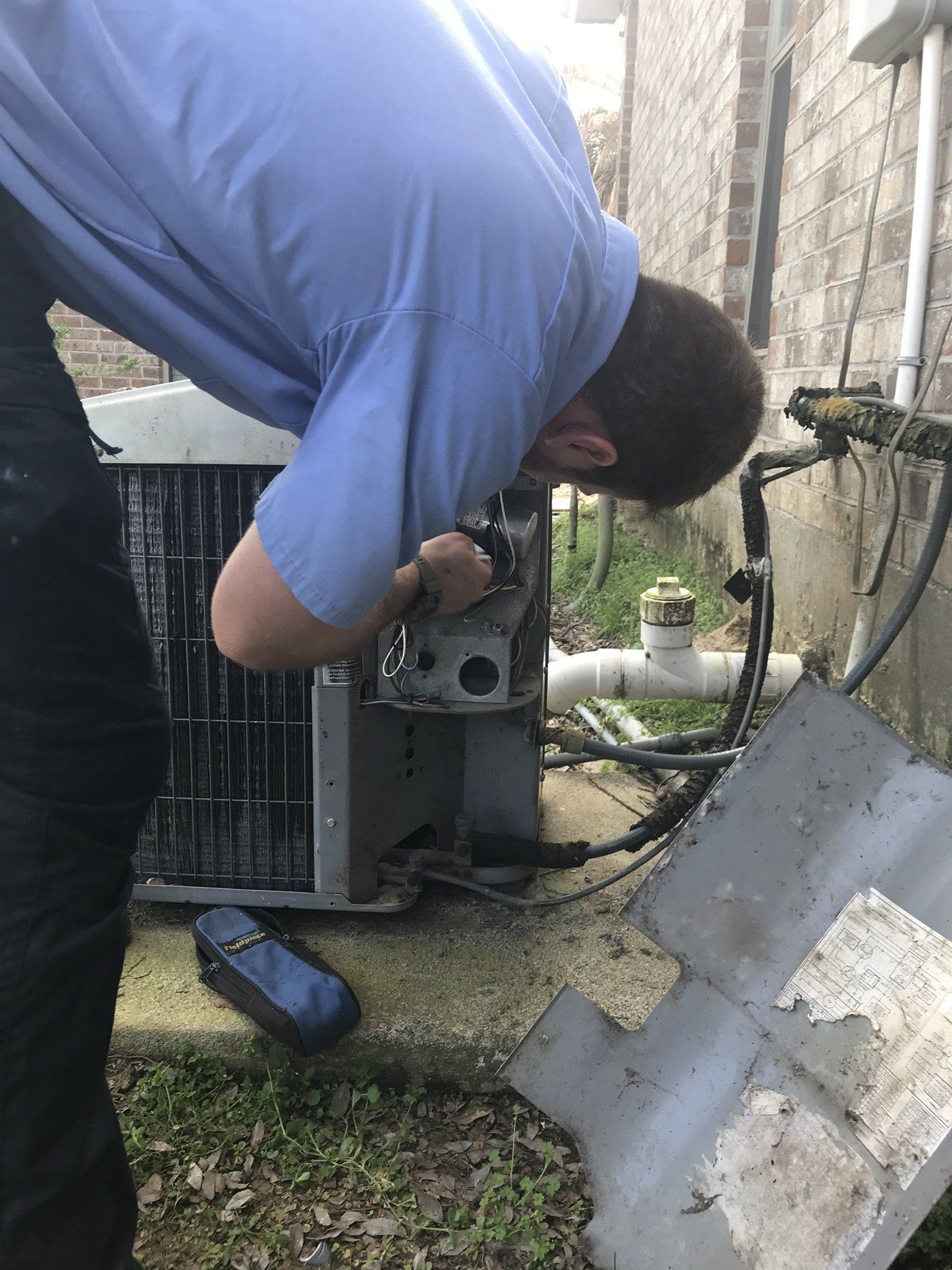
January 3, 2025
Why "Just Adding Freon" is a Thing of the Past: The Impact of A2L Refrigerant Changes On Homeowners For decades, when an air conditioning system wasn’t cooling effectively, homeowners would call their HVAC technician to “just add Freon.” While this quick fix was common, changes in refrigerant technology and environmental regulations have made it obsolete. With the introduction of A2L refrigerants, the industry is shifting toward more sustainable and efficient solutions. Here’s what you need to know about why "topping off" refrigerant is no longer possible. The Evolution of Refrigerants Refrigerants are essential to the cooling process in HVAC systems, but not all refrigerants are created equal. Over the years, refrigerants have evolved to address environmental concerns: R-22 (Freon): Once the industry standard, R-22 was phased out due to its ozone-depleting properties. R-410A: Introduced as a more environmentally friendly option, R-410A became the new standard but still has a high global warming potential (GWP). A2L Refrigerants: The latest generation of refrigerants, A2L options like R-32 and R-454B, offer lower GWP and improved efficiency, aligning with global efforts to reduce greenhouse gas emissions. Why "Just Adding Freon" is Impossible with A2L Systems The transition to A2L refrigerants has fundamentally changed how HVAC systems are serviced and maintained. Here’s why: System Compatibility Older systems designed for R-22 or R-410A are not compatible with A2L refrigerants. Using the wrong refrigerant can damage the system and void warranties. Onboard Leak Detection Systems New A2L systems are equipped with advanced onboard leak detection systems that make "just adding refrigerant" impossible. If a leak is detected, the system automatically locks out operation until the leak is repaired. This ensures safety, compliance with environmental regulations, and system reliability. Environmental Regulations Strict environmental laws now regulate the use and disposal of refrigerants. Simply adding refrigerant to a leaking system is no longer acceptable; leaks must be repaired to prevent harmful emissions. Safety Considerations A2L refrigerants are classified as mildly flammable. While they are safe when handled correctly, they require specialized training, tools, and safety measures during installation and servicing. What Homeowners Should Know With onboard leak detection systems that require permanent repairs before operation can resume, A2L refrigerants represent a new era of HVAC technology. This is going to be a major inconvenience to the customer whenever their new system has a manufacturer defect in a coil causing a leak. This is why it is more important than ever to use a reputable HVAC company to install and service these new systems. Larger companies usually have better purchasing power and parts sourcing - leading to quicker part replacements, which will now be required to the get these new systems working again. The days of "it only took a pound of freon, see ya next year!" are over. This now becomes "The system is leaking, unfortunately the onboard leak detector has locked the system out. We found a leak in the evaporator coil. We will see if we can get a coil for you and schedule a time to come replace it. Unfortunately we will have to leave the system off until we can get back" This is the future of our industry and is something we will have to work through together as business owners and consumers. It won't be fun, but we have no other choice. Ya never know, we may be buying portable air conditioners to get customers along until parts arrive in the future. Rest assured though, whatever comes, we will handle it.

January 2, 2025
Why HVAC Capacitors Fail: What Homeowners Need to Know If you’ve ever experienced an issue with your air conditioner or heat pump, there’s a good chance the culprit was a failed capacitor. Capacitors are small but essential components of your HVAC system. They provide the initial boost of energy needed to start the motors and keep them running efficiently. When a capacitor fails, it can bring your entire system to a halt. Here’s what you need to know about why capacitors fail and how to prevent it. What is an HVAC Capacitor? Capacitors store and release energy to power the motors in your HVAC system, including the compressor, blower, and fan. There are two main types of capacitors used in HVAC systems: Start Capacitors: Provide the extra energy needed to start the motor. Run Capacitors: Maintain a consistent flow of energy to keep the motor running. Common Reasons Capacitors Fail While capacitors are designed to last for several years, various factors can cause them to fail prematurely. Here are some of the most common reasons: Overheating High outdoor temperatures and poor ventilation around your HVAC unit can cause capacitors to overheat. Excessive heat breaks down the internal components, leading to failure. Voltage Fluctuations Power surges or inconsistent voltage supply can damage the delicate electrical components inside the capacitor. This is particularly common during storms or in areas with unstable power grids. Age and Wear Over time, capacitors naturally degrade and lose their ability to hold a charge. Most capacitors have a lifespan of 5-10 years, depending on usage and environmental conditions. Poor Quality Components Cheaper, low-quality capacitors are more likely to fail prematurely. Investing in a high-quality capacitor can extend the life of your system. Electrical Overload If your HVAC system is working harder than usual—due to dirty coils, a clogged filter, or an undersized unit—the capacitor can become overloaded and fail. Physical Damage Debris, corrosion, or mishandling during installation or maintenance can physically damage the capacitor and lead to failure. Signs of a Failing Capacitor Recognizing the early signs of a failing capacitor can help you address the issue before it causes more significant damage: System Won’t Start: If the motors don’t start or take longer than usual to start, the capacitor may be the issue. Humming Noise: A failing capacitor can produce a low humming noise as it struggles to function. Reduced Cooling or Heating Efficiency: When the motors don’t run properly, your system’s performance will suffer. Frequent Cycling: The system may turn on and off more frequently than normal. Burning Smell: Overheating capacitors can emit a burning smell, indicating an urgent need for repair. How to Prevent Capacitor Failure While capacitor failure can’t always be avoided, regular maintenance and care can significantly reduce the risk: Schedule Annual HVAC Maintenance A professional technician can inspect and test your capacitor during routine maintenance, identifying potential issues early. Ensure Proper Ventilation Keep the area around your outdoor unit clear of debris and vegetation to prevent overheating. Use a Surge Protector Installing a surge protector can shield your HVAC system from power surges and voltage fluctuations. Replace Air Filters Regularly While replacing air filters helps maintain airflow and system efficiency, it does not directly impact the capacitor. Regular filter changes ensure the overall system doesn’t overwork, indirectly protecting all components, including the capacitor. Invest in Quality Components If a capacitor needs replacement, opt for a high-quality part to ensure better performance and longevity. Final Thoughts Capacitors are small but mighty components that play a critical role in the operation of your HVAC system. Understanding why they fail and taking proactive steps to prevent issues can save you from unexpected breakdowns and costly repairs. If you suspect a capacitor problem, it’s best to call a professional technician to diagnose and fix the issue promptly.

By 7001715912
•
December 30, 2024
In HVAC systems and many other heating applications, the heat exchanger plays a vital role. It ensures that homes and businesses stay warm efficiently while keeping harmful gases safely contained. But what exactly is a heat exchanger, and what risks arise when it fails? Let’s dive into the details. What is a Heat Exchanger? A heat exchanger is a critical component in furnaces and HVAC systems, designed to transfer heat from one medium to another without mixing the two. In residential and commercial furnaces, the heat exchanger typically transfers heat from the combustion process (burning fuel) to the air that is circulated throughout the building. Here’s how it works: The furnace burns fuel (natural gas, propane, or oil) to generate heat. This heat is transferred to the metal walls of the heat exchanger. A fan blows air over the heat exchanger, warming the air without it coming into contact with the combustion gases. This separation is crucial for safety because combustion gases like carbon monoxide (CO) are harmful to human health. What Happens When a Heat Exchanger Fails? Over time, heat exchangers can develop cracks or holes due to wear, corrosion, or overheating. When this happens, the dangers are significant: 1. Carbon Monoxide Leaks One of the most severe risks of a failing heat exchanger is the leakage of carbon monoxide (CO) into the living or working space. Carbon monoxide is a colorless, odorless gas that can be deadly in high concentrations. Symptoms of CO poisoning include: Headaches Dizziness Nausea Confusion Prolonged exposure or high levels can lead to unconsciousness or death. 2. Reduced Efficiency A damaged heat exchanger cannot transfer heat effectively, leading to reduced efficiency in the heating system. This inefficiency results in higher energy bills and uneven heating in the building. 3. Increased Risk of Fire Cracks or damage in the heat exchanger can allow flames or high heat to escape into areas of the furnace not designed to withstand such conditions. This increases the risk of a furnace fire. 4. Increased Strain on the System Operating a system with a failing heat exchanger places additional strain on other components, potentially leading to further damage and the need for costly repairs or replacement. Warning Signs of a Failing Heat Exchanger It’s essential to recognize the signs of a failing heat exchanger early to mitigate risks: Soot buildup on or near the furnace. Unusual smells, particularly a strong or acrid odor. Visible cracks or corrosion on the heat exchanger (detected during professional inspection). Yellow or flickering burner flames instead of steady blue flames. Frequent tripping of carbon monoxide detectors. How to Prevent Heat Exchanger Failures Regular maintenance and inspections are the best ways to ensure your heat exchanger remains in good condition. Here’s how: Schedule annual HVAC maintenance with a licensed technician. Replace furnace filters regularly to ensure proper airflow. Avoid overheating the system by not setting the thermostat too high for extended periods. Install and maintain carbon monoxide detectors throughout your home or business. What to Do If You Suspect a Heat Exchanger Failure If you notice any warning signs or suspect your heat exchanger may be failing: Turn off your furnace immediately. Ventilate the area by opening windows and doors. Contact an HVAC professional to inspect and repair or replace the heat exchanger. Evacuate the building if carbon monoxide poisoning is suspected and seek medical attention if necessary. Final Thoughts A heat exchanger is a vital safety component in your furnace, ensuring efficient heating while keeping harmful gases like carbon monoxide out of your living or working space. When a heat exchanger fails, the risks can be severe, but regular maintenance and vigilance can prevent most issues. Protect your home or business by staying informed and proactive about your HVAC system’s health.
SERVING
,
This is a placeholder for the Yext Knolwedge Tags. This message will not appear on the live site, but only within the editor. The Yext Knowledge Tags are successfully installed and will be added to the website.
and Surrounding Areas
HOURS
This is a placeholder for the Yext Knolwedge Tags. This message will not appear on the live site, but only within the editor. The Yext Knowledge Tags are successfully installed and will be added to the website.
Monday
Tuesday
Wednesday
Thursday
Friday
Saturday
Sunday
This is a placeholder for the Yext Knolwedge Tags. This message will not appear on the live site, but only within the editor. The Yext Knowledge Tags are successfully installed and will be added to the website.
Hours:
This is a placeholder for the Yext Knolwedge Tags. This message will not appear on the live site, but only within the editor. The Yext Knowledge Tags are successfully installed and will be added to the website.
CONTACT US
This is a placeholder for the Yext Knolwedge Tags. This message will not appear on the live site, but only within the editor. The Yext Knowledge Tags are successfully installed and will be added to the website.
This is a placeholder for the Yext Knolwedge Tags. This message will not appear on the live site, but only within the editor. The Yext Knowledge Tags are successfully installed and will be added to the website.
Hi. Do you need any help?
Privacy Policy
| Do Not Share My Information
| Conditions of Use
| Notice and Take Down Policy
| Website Accessibility Policy
© 2025
The content on this website is owned by us and our licensors. Do not copy any content (including images) without our consent.
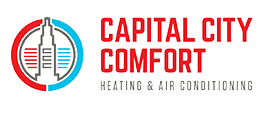


Share On: